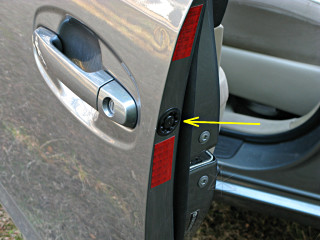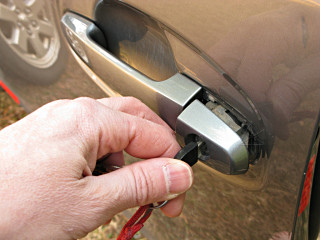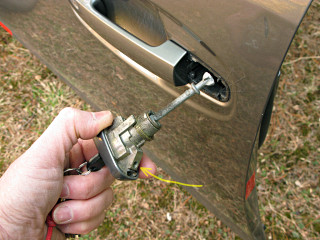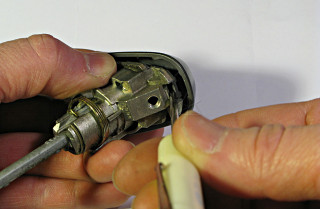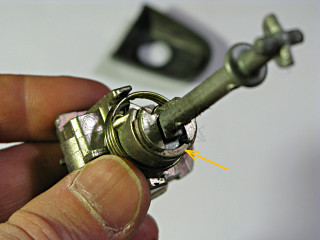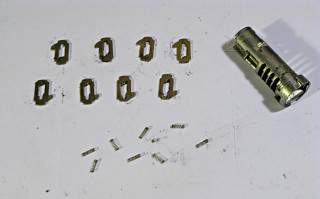
|
This is why you don't lubricate a lock with grease or even normal oil. These
things are a mess, and had to pretty much be manually dug out of the plug
one by one [especially the springs]. At this point I gave up on meticulous
hand-cleaning and dumped the whole collection and the plug into some paint
thinner. Ooh, shiny.
There are eight tumblers, in pairs, with each pair having an "up" member
and a "down" member as far as which way they're sprung. The key has eight
identical cuts on both sides. This is how the "insert either way" feature
works -- alternate-side key cuts simply hit whatever tumbler is on the up or
down side at a given position. There's a thin spacer between each pair, so
the cut spacing along the key isn't strictly even. From what I can tell,
there are four possible cut heights, with numbers stamped on the spring tabs.
No, you can't make a key to my car from this -- they were permuted before
the picture was shot. Nice try.
|
